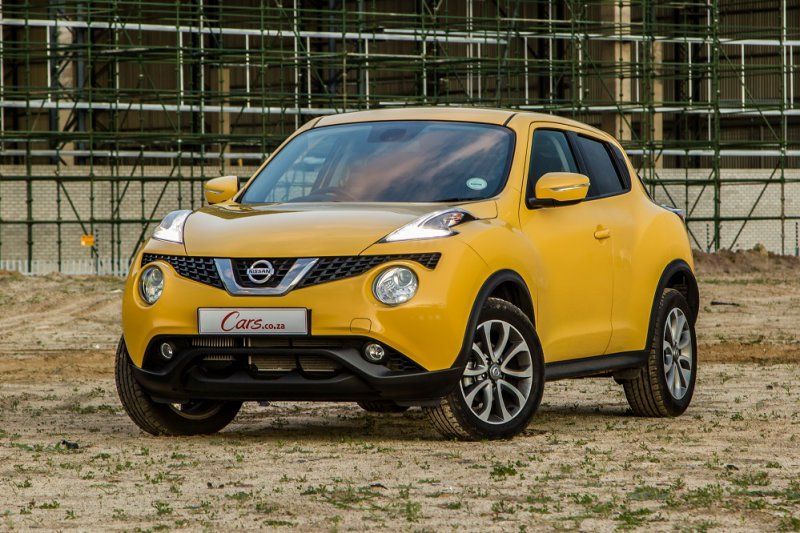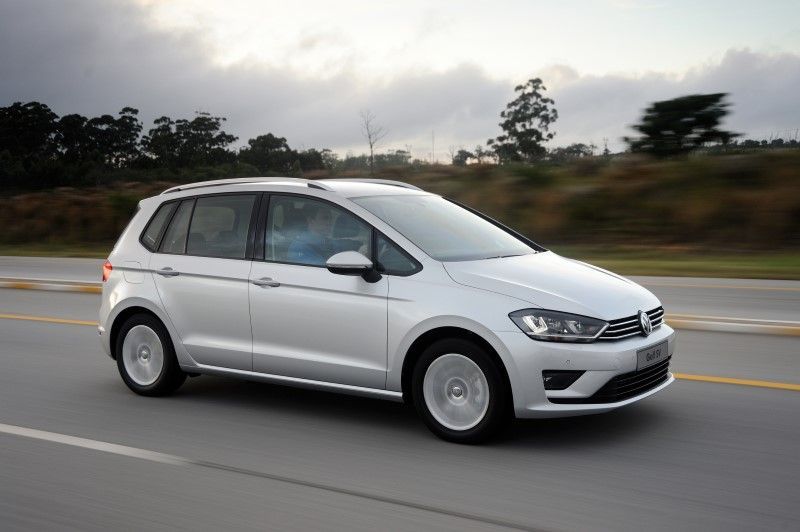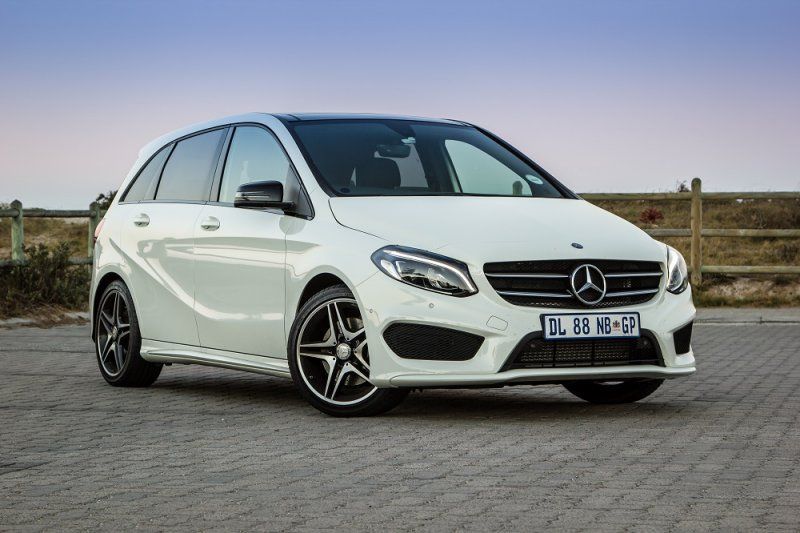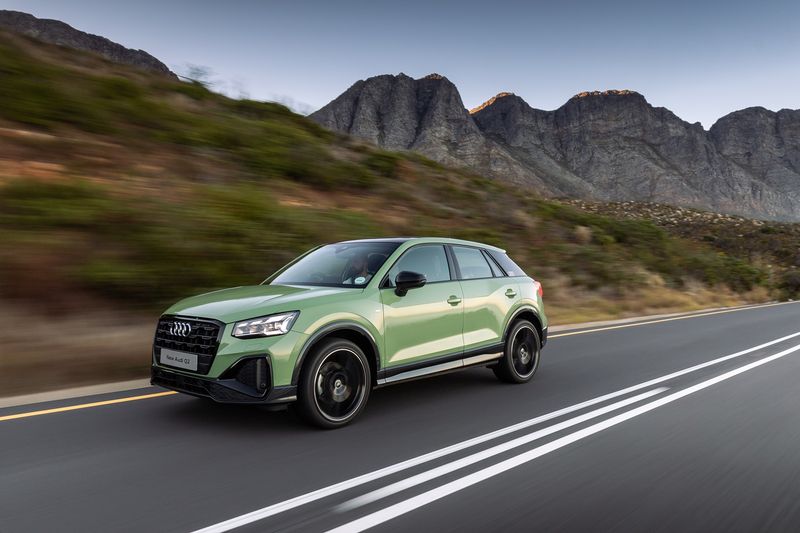6 Small Crossovers that faltered, so others could fourish
Small crossovers are the most popular new passenger vehicles in South Africa, but the path to their utter domination was laid by quirky 4-wheeled holdalls and compact MPVs, some of which were ahead of their time… and others, well, misguided.
Today, our choice of vehicles has become based on the premise that consumers with active lifestyles strive to enjoy weekend getaways or that marketer’s chestnut of “being more in touch with ourselves”.
I refer, of course, to small crossovers, the rise of which is fuelled by taste-making trends in automotive manufacturing methods; economics to a greater degree and environmentalism… to a near-zero one.

The traditional mainstay of the nuclear family, the 3-box sedan – has now been almost completely elbowed out of the market by the trifecta of SUVs, crossovers and hatchbacks; which take up 80% of the South African new-vehicle market; and double-cab bakkies occupying another 10%.
For all its rampant popularity, though, the small crossover (also known as the compact family car) owes much of its success to its evolutionary forebear, the similarly-sized small multi-purpose vehicle (MPV).

The DNA of these slab-sided, 5-seater/5-door-styled, um, “bread vans” characterise much of what modern-day crossover tyre-kickers require – such as versatility, additional space (owing to a tall roof, large windows and, in some cases, a flat floor that facilitates modular seating arrangements), a big-car feel with over-assisted steering and wafty suspension – and crucially, reasonably good fuel efficiency.
Of the cars below, only the BMW 2 Series Active Tourer and Mercedes-Benz B-Class still exist, but neither of them are still available in the South African new-vehicle market. Nevertheless, all of them did once serve a purpose as warriors in the never-ending pow-wow for market share, and with varying degrees of success. Looking back, though, each company could have done much better…
Citroën C3 Picasso (2008-2017)

Taking a leaf from the OG MPV, the Renault Scénic, the Citroen C3 Picasso iconised the box-on-wheels from the mid-2000s compact MPV category. It was quirkily styled and sported a cavernous glasshouse, lots of hidey holes, a premium-feeling interior (by French car standards) and, sigh, woeful performance.
The C3 Picasso – and its upsized C4 Picasso sibling, which won its category in the 2015/16 #CarsAwards – made cubist cars about as sexy as they could be; they balanced work and play while moving affordable family transport out of the realm of necessity into tasteful choices for city slickers and suburbanites.

If you like to buck the trend and French cars are your thing (vive la différence and all that), the air bump cladded C4 Cactus, which emerged during the C3 Picasso’s twilight years, was off-the-wall cool!
The contemporary Peugeot 2008 offers similar faux-off-road vibes; as do the Clio-based Renault Captur, Kiger and larger Kadjar small crossovers, the latter of which is a Nissan Qashqai clone.
Kia Soul (2008-2019)

The oddball Kia Soul soldiered on for 10 years in South Africa until the end of 2019, when the Seoul-based company announced that the 3rd-gen model would not be produced in right-hand drive guise.
When it debuted in Mzansi in 2009, the Kia Soul seemed almost cartoonish and commentators struggled to categorise it into an appropriate market segment, but with the benefit of hindsight, this Korean holdall (a repackaged hatchback) was a “a funky trolley for the plugged-in generation” – and ahead of its time.
Another drollishly designed “box on wheels” that featured in our market (if briefly) was the Daihatsu Materia, of which GWM produced a “tribute model”, named the Coolbear 150 (yes, you read right).

At a stretch, possible contemporary exceptions are the recently departed Jeep Renegade and its Fiat 500X and 500L cousins, although they’re more small crossovers than blockish holdalls in nature.
Back then, far more appealing was the madcap Nissan Juke, which unfortunately did not reach South Africa in 2nd-gen guise. See also: Nissan Juke 1.2T Acenta+ (2015) Review

The nearest successors to the Soul from the Kia stable are the Sonet and its larger Seltos sibling, both of which compete strongly in the country’s most overcrowded and hardest-fought segment.
Ford gave away significant market share when it stopped producing the popular EcoSport (replaced by the pricier Puma), while Honda’s Elevate and HR-V are relatively conservative offerings, but worth a look.
Opel Meriva (2004-2017)

The underrated Opel Meriva, which came and went several times in Mzansi, represented the German marque’s valiant attempt to beat French brands – the pioneers of the compact MPV – at their own game.
The 2nd-gen model (launched in 2012) even featured rear suicide doors – a phrase incidentally much-hated by Opel’s local PR team. But the Meriva’s interior was solid (this was before General Motors’ bean counters effectively gutted Opel by moving production of many models to Korea and rebadging them as charmless Chevrolets), its 1.4-litre turbopetrol engine was punchy and the ride quality well above par.

There was also a flexible seating arrangement that enabled a near-flat loading space. With sharper lines and a more high-tech interior, it was an infinitely sexier take than, for example, the blobby chastity belt that was the Toyota Verso. Toyota did eventually redeem itself with the Corolla Cross, though.
Today, Opel is free from General Motors’ rule and sits in the Stellantis stable. The Meriva has been succeeded by the Crossland and, even though the 1st-gen Mokka X felt a bit dusty straight out of the box (back in 2016), the current-gen Mokka is a wholly more charismatic high-heeled family-hauler.
See also: Opel Mokka (2022) Review
Volkswagen Golf SV (2015-2017)

At least once in every automotive product planner’s career, there comes a moment when a sweaty, clenched hand is raised in the reluctant admission of a grave occupational misestimation.
The Volkswagen Golf SV was one of those blunders. Neither fish nor foul, it wasn’t a conventional hatchback or really an estate, for that matter, but worst of all – Volkswagen allowed the unloved Golf SV to exist in the shadow of the Touran, which was already the company’s anointed small MPV offering.

VW was late to the small crossover party (the T-Cross arrived in 2019 and the Taigo in 2020), but it could have had an earlier foothold had it built something akin to the Mazda CX-3 or CX-30. The brand sold so few Golf SVs in Mzansi that the model is destined to be a future classic – albeit not a very desirable one.
BMW 2 Series Active Tourer (2015-2018)

The 2 Series Active Tourer was BMW’s first front-wheel-drive model – at the time, it made traditionalists choke on their bratwurst. The model was designed to lure new customers to BMW, and once hooked, the brand hoped they would look to its core line-up, under which the Active Tourer patently did not fall.
It was effectively a reskinned Mini Countryman, but a far worse interpretation; for the world had become used to estate-styled Minis thanks to the cool-ish (now discontinued) Clubman, but not a BMW minivan!

The Active Tourer package just felt awkward or… unresolved. Interior comfort wasn’t terrible and quality outshone many rivals, but the ride quality was harsh on large-diameter tyres and the diesel engine noisy.
Moreover, philosophically it was hard to fathom why anybody would have preferred the 2 Series Active Tourer over a BMW X1, which, incidentally, by then was also available in front-wheel-drive guise.

Mirroring the fortunes and timeline of the Golf SV, the BMW 2 Series Active Tourer was taken off the market after about 2 years in South Africa. As for the 2nd-gen model? It was never launched here.
As far as left-field models go, the Munich-based firm really should have drawn the line at the 3 Series GT, or the gawky X4, the latter of which would have also made a perfect, if ungainly – gateway BMW.
See also: BMW X5: Most influential car of this century (so far)
Mercedes-Benz B-Class (2006-2024)

Of all of these, the Mercedes-Benz B-Class endured the longest. It was withdrawn from the local market earlier this year and, in 2025, it will finally be shelved globally as ‘Benz streamlines its model line-up.
The B-Class has always been somewhat of an anomaly: The 1st-gen model was an indistinct A-Class clone, whereas its successor was perhaps a too literal interpretation of the formula for the Mercedes-Benz faithful to come to terms with; the outgoing one, in turn, is more hatchback than humpback.
Among Germany’s trio of premium brands, only Audi was clairvoyant enough not to try its hand at a Postman Pat-style people-mover, a genre inherently characterised by a low sales ceiling that BMW and Mercedes-Benz seemed to ignore. Moreover, those 2 brands over-relied on their respective promises of a premium-feeling small crossover when there were more practical and affordable options at hand.

Neither 2 Series Active Tourer nor B-Class buyers were likely to drive on gravel roads often, so they may as well have bought any of the following models by volume manufacturers, which have made their family cars notably upmarket: Haval H6, Mazda CX-5, Hyundai Tucson, Kia Sportage and Volkswagen Tiguan.
Audi’s nearest indiscretion of the sort came by way of the Q2 (the cousin of the Volkswagen T-Roc), which is a tad pricey, too weirdly positioned in Audi’s range and too irresolute against its competitors.

Small crossovers: A recipe refined
Even a cursory glance at the above list reveals that what compact MPVs fundamentally lacked was the default taller driving position and improved esthetics that contemporary small crossovers offer. Other contenders were either simply too far ahead of their time or best described as misguided mashups.
It’s also hard to make a style statement when relying on the gawky, boxiness of MPVs when small crossovers – with increasingly car-like driving traits – can be visually scaled up or down while retaining a greater degree of allure… and dignity. In retrospect, it’s easy to see how small MPVs and boxy holdalls were mere evolutionary (mis)steps on the ladder that allowed crossovers to ascend to global domination.
Find exclusive car-themed merchandise at the SentiMETAL Shop
Related content:
Freakish cars that we’re (kind of) glad were made
For business, not pleasure: App-tap small sedans
Want a versatile, spacious 7-seater? Don’t buy an SUV
Turbodiesel heroes you might have forgotten about
Forget the M3 Touring, you want a Golf R Wagon